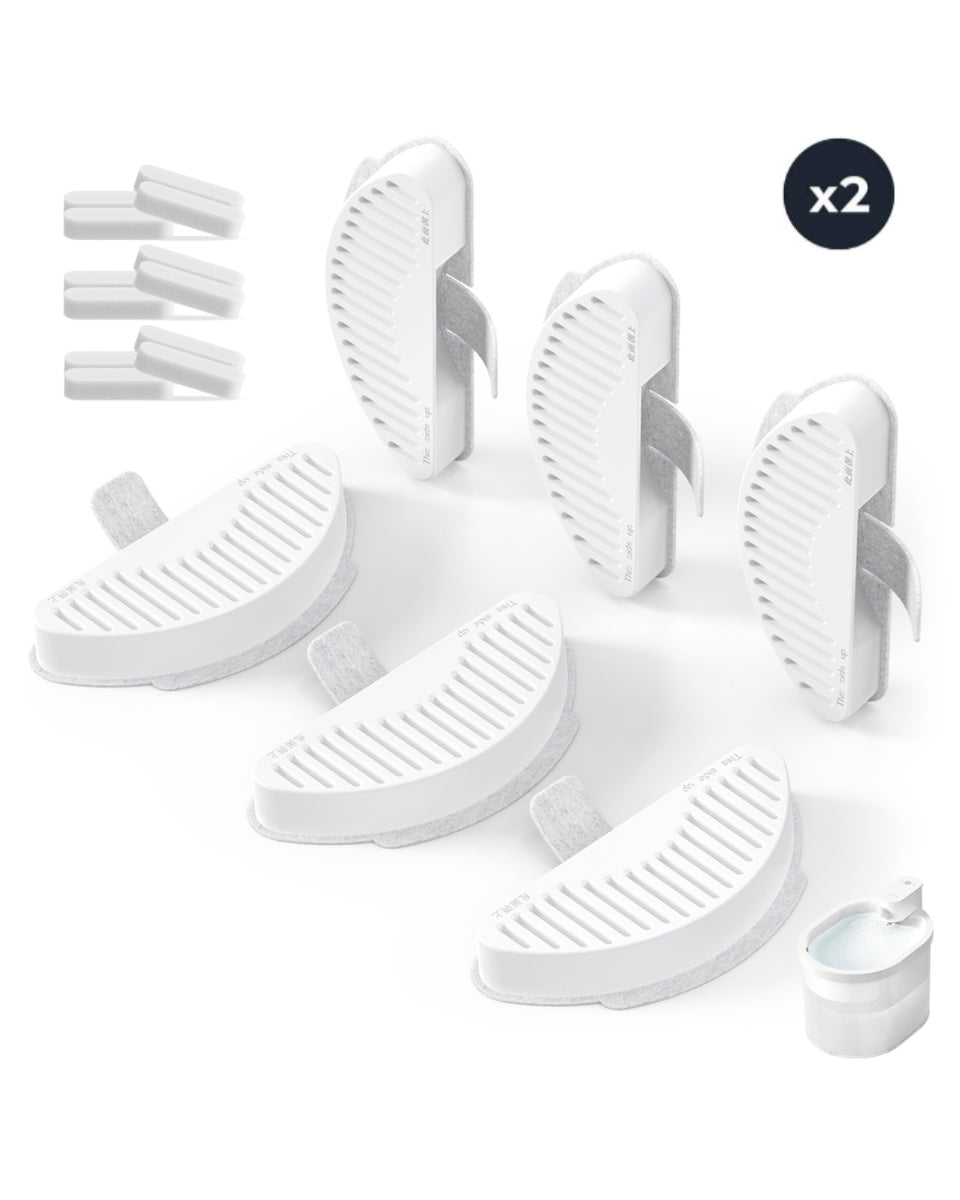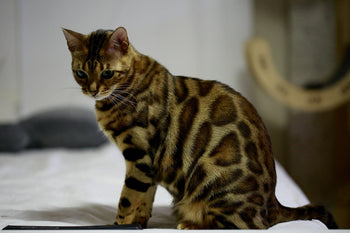Cats are adorable creatures that make great companions for many people. They come in different sizes, colors, and breeds, but one question that many cat owners have is when do cats stop growing? Understanding the growth patterns of cats is essential for their health and well-being. In this article, we will explore the various factors that affect the growth of cats and provide a timeline of their growth.
Factors Affecting Growth There are several factors that affect the growth of cats, including genetics, nutrition, and environment. Genetics plays a significant role in determining the size and weight of a cat. Some breeds are naturally larger than others, and their growth rate can vary. Nutrition is also essential for the growth of cats. A balanced diet that provides all the necessary nutrients is critical for healthy growth. Environmental factors such as stress and physical activity can also affect the growth of cats.
Timeline of Growth The growth of cats can be divided into several stages. Kittens grow rapidly in the first few weeks of life, and by the age of six months, they have reached about 75% of their adult size. From six months to one year, cats continue to grow, but at a slower rate. By the age of one year, most cats have reached their full adult size. However, some breeds, such as Maine Coons, can take up to three years to reach their full size.
When Do Cats Stop Growing: A Guide to Feline Development
Key Takeaways
Genetics, nutrition, and environment all play a role in the growth of cats.
Kittens grow rapidly in the first few weeks of life and reach about 75% of their adult size by the age of six months.
Most cats have reached their full adult size by the age of one year, but some breeds can take up to three years to reach their full size.
Factors Affecting Growth
Cats are known for their agility and playful nature, but when it comes to their growth, there are several factors that come into play. Here are some of the key factors that can affect a cat's growth:
Influence of Breed, Genetics, and Nutrition
Breed and genetics play a major role in determining a cat's growth rate. Different breeds have different growth patterns and can reach maturity at different ages. For example, Siamese cats tend to reach maturity earlier than Persian cats. Genetics also play a role in determining a cat's size and weight. Some cats may be naturally smaller or larger than others due to their genetic makeup.
Nutrition is another important factor that can affect a cat's growth. A well-balanced diet that includes all the necessary nutrients is essential for healthy growth. Feeding a cat a diet that is too high in calories can lead to obesity, while a diet that is lacking in essential nutrients can lead to stunted growth.

Impact of Spaying or Neutering
Spaying or neutering a cat can also have an impact on their growth. Cats that are spayed or neutered at a young age may grow larger than cats that are not. This is because spaying or neutering can affect the cat's hormonal balance, which can in turn affect their growth rate.
However, it's important to note that spaying or neutering is still recommended for the overall health and well-being of the cat. The potential impact on growth is just one factor to consider when making the decision to spay or neuter.
Related Posts:
Timeline of Growth
Cats are known for their unique growth patterns, which vary based on their breed, age, and gender. Understanding the timeline of growth can help cat owners monitor their feline's development and ensure they are healthy and happy.
General Timeline Based on Age and Breed
In general, cats stop growing between 1-2 years of age. However, this timeline can vary depending on the breed of the cat. For example, larger breeds such as Maine Coons can take up to 4 years to reach their full size.
During the first few weeks of life, kittens grow rapidly, with their weight doubling or even tripling in just a few short weeks. By the time they are 6 months old, most cats have reached about 75% of their adult size. From there, growth slows down, with cats gaining weight at a much slower rate until they reach their final size.
Monitoring Growth Development
Monitoring your cat's growth development is important to ensure they are healthy and growing at a normal rate. Regular vet check-ups can help identify any potential issues early on. Additionally, monitoring your cat's weight and body condition score can help you track their growth and ensure they are not becoming overweight or underweight.
It's also important to provide your cat with a balanced diet and plenty of exercise to support their growth and development. This can include providing them with toys to play with, scratching posts to keep their claws healthy, and plenty of opportunities to climb and explore.
Related Posts:

Health Considerations
When it comes to cats, ensuring their health and well-being is a top priority. As cats grow, it is important to keep an eye on their health and schedule regular veterinary check-ups to prevent and detect any potential health issues.
Importance of Veterinary Check-Ups
Regular veterinary check-ups are essential for cats of all ages, including kittens and adult cats. These check-ups can help detect any potential health issues early on, allowing for prompt treatment and management. During these check-ups, the veterinarian will perform a physical exam, check for any abnormalities, and recommend any necessary tests or treatments.
In addition to regular check-ups, it is important to keep up with your cat's vaccinations, parasite prevention, and dental care. These preventative measures can help keep your cat healthy and reduce the risk of potential health issues.
Potential Health Issues
As cats grow, there are several potential health issues to be aware of. These can include dental disease, obesity, kidney disease, and hyperthyroidism, among others. Signs of these health issues can include changes in appetite, weight loss or gain, lethargy, and changes in behavior.
If you notice any changes in your cat's behavior or health, it is important to schedule a veterinary check-up as soon as possible. Early detection and treatment can help improve your cat's overall health and quality of life.
Related Posts:
Conclusion
In conclusion, cats stop growing at different ages depending on their breed, gender, and overall health. Most cats reach their full size by the time they are one year old, but some breeds can take up to three years to reach their full size. It is important to note that while cats may stop growing in size, they can continue to gain weight and become overweight or obese if they are not fed a healthy diet and given enough exercise.
It is also important to monitor a cat's growth and development during their first year of life to ensure they are reaching their milestones and growing at a healthy rate. Regular visits to the veterinarian can help identify any potential health issues that may be affecting a cat's growth.
Overall, understanding when cats stop growing can help cat owners provide the best care for their furry friends and ensure they live long, healthy lives.

Frequently Asked Questions
At what age do male cats typically reach full size?
Male cats typically reach their full size between 1-2 years of age. However, some breeds may take longer to reach their full size.
How long does it take for female cats to reach their full growth?
Female cats generally reach their full size by the time they are 1 year old. However, like male cats, some breeds may take longer to reach their full size.
What is the growth rate of kittens during their first year?
During their first year, kittens can grow up to 1 pound per month. However, their growth rate may vary depending on their breed, diet, and overall health.
Can the size of a kitten's paws indicate its adult size?
The size of a kitten's paws is not a reliable indicator of its adult size. While larger paws may suggest a larger adult size, it is not always the case.
How does the growth timeline differ for large breeds like Maine Coons?
Large breeds like Maine Coons may take longer to reach their full size, with some not reaching their full size until they are 3-5 years old.
What factors can affect the growth and development of a domestic cat?
Factors such as genetics, nutrition, and overall health can affect the growth and development of a domestic cat. It is important to provide them with a balanced diet, regular exercise, and proper veterinary care to ensure their healthy growth and development.
Related Posts:















